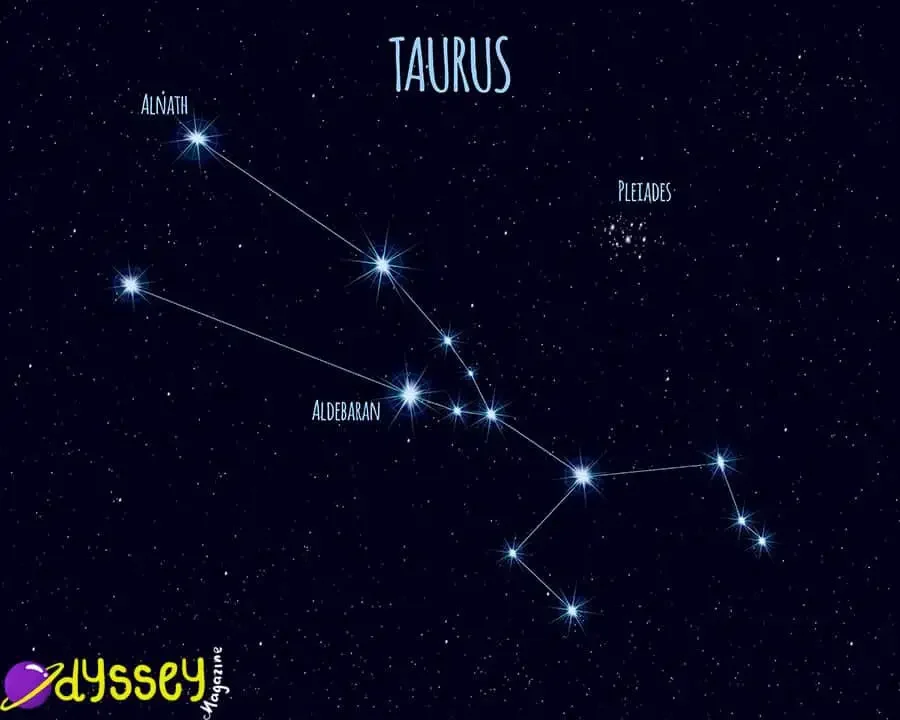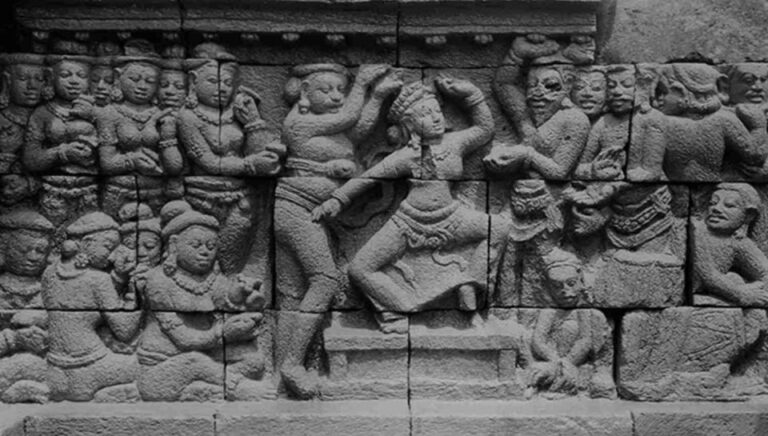Taurus Constellation | The Bull
The Taurus Constellation is one of the most well known constellations in modern astronomy. This is due to it’s position within the area of the Zodiac, which means that many modern followers of astrology have the Taurus as their Zodiac sign.
- Bordered By; Auriga, Perseus, Aries, Cetus, Eridanus, Orion, Gemini.
- Named after; The Bull
- Declination; 19°
- Brightest Star; Aldebaran
- Best seen; Northern Hemisphere, January
- Size rank; 17th
- Constellation family; Zodiac
- Pronunciation; TORE-US

The Taurus is named after the Bull (Taurus is latin for Bull). The Bull has always been a respected animal throughout history, known for it’s determination and stubbornness, which we even use today in modern horoscopes based on tropical astrology. The Taurus features in many mythologies, including Persian, Egyptian, old Babylonian and the Druids. It is probably best known for it’s inclusion in Greek Mythology; King of the Gods Zeus assumed the form of a bull to rescue Princess Europa. It is said that Zeus placed the bull in the stars as appreciation of the beast.
It is very hard to know who actually founded the Taurus Constellation. Writings of the Taurus actually date all the way back to the Bronze Age, thousands of years before Christ was born (BC). As mentioned, the Taurus features in many different mythologies, but the modern Zodiac constellations that we use today date back to greek astronomer, Ptolemy.
Some people find the best way to find the Taurus Constellation is to actually find the Orion constellation first, as they are neighbours. The best time of the year to see the Taurus in the Northern Hemisphere is ideally January, but it is visible between November and March quite easily. After this, through the end of April to July, the Taurus will disappear behind the Sun.
There are a few different stars to talk about with Taurus, with the largest and brightest being Aldebaran. Use the image below to match the stars to it’s position.

Aldebaran, or Alpha Tauri, is the biggest star in the Taurus constellation. It is approximately 65 light years away from the Sun, and as well as being the brightest star in the Taurus constellation, it’s actually the 14th brightest star altogether. It is 400x as luminous as the Sun, and it takes a long time to make a full rotation, equal to 520 Earth days. It is a giant star, known for it’s orange color.
Alnath, also referred to as Elnath or Beta Tauri, is the 2nd brighest star and is approximately 134 light years away from us. The name is actually derived from Arabic, where it literally means The Bulls Horns. It is a Mercury Manganese star, which means that it has a typically slow rotation and a calm atmosphere. Alnath makes up one of the Taurus’s horns.
The other horn of the Taurus is the star Zeta Tauri, which is a binary star (meaning it’s actually a system of two stars rotating around an object in the middle, called a barycenter). The two stars are named Zeta Tauri A and Zeta Tauri B.
If you know about astronomy, then you have likely heard of Pleiades. If you haven’t, then you may have heard of it’s alias, the Seven Sisters. They are a cluster of stars to the North-west of Taurus, and it’s the most easily seen cluster to us without using a telescope (this makes it a great place to start to find the Taurus consellation). It is a group of hot blue stars, and is commonly mentioned within mythology.
Little else needs to be said about the Taurus, one of the most well known constellations in the Sky. Although it isn’t visible throughout certain times of the year, it is generally visible to both those on the Northern and Southern hemisphere, particularly it’s Alpha star, which is easily seen.




